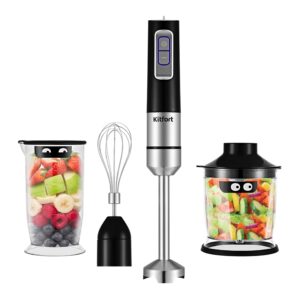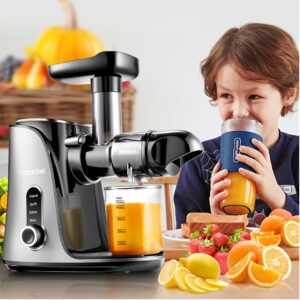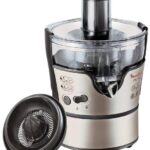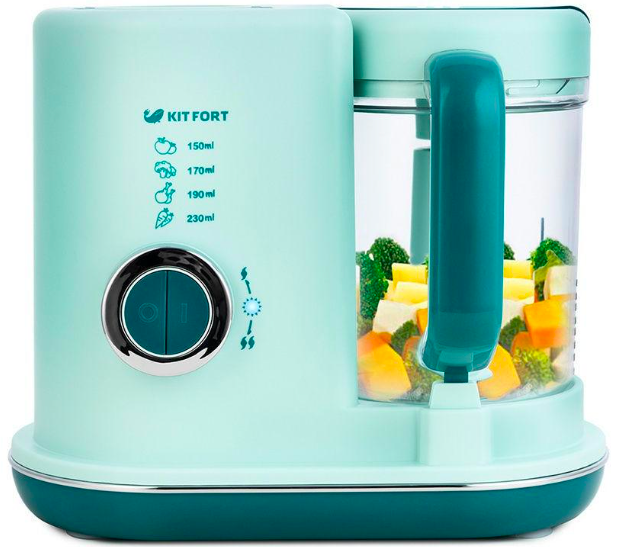Blender or juicer: which is better and how do the devices differ? Their pros and cons
Various tools are used in the kitchen, for example, a blender, a juicer. They are similar to each other in that they grind food. But a juicer is used only for making juice, and a blender is also used for a number of other tasks, for example, obtaining minced meat. The pros and cons of each device and the features of choice are described in this article.
The content of the article
Pros and cons of a blender
A blender is a tool that can be used to grind different products. As a result, they turn into mush, puree or minced meat. It can be of 2 main types:
- submersible;
- stationary.
The submersible is a long handle with a control panel. It is equipped with different attachments for chopping (with knives) and whipping (whisk). The stationary one is represented by a stand. It stands on the table, the ingredients are put into the container and crushed. Mainly used for making cocktails.
Regardless of the specific model, the blender has quite a lot of advantages:
- convenient and quite powerful device;
- allows you to quickly grind ingredients;
- designed to work with different products;
- you can prepare different dishes - purees, smoothies, cocktails, including juice;
- Finally, blenders are inexpensive - as a rule, significantly cheaper than juicers.

However, there are also disadvantages:
- The power of the blender, as a rule, is not enough to chop carrots and beets;
- the process must be constantly monitored.
Pros and cons of a juicer
The juicer is designed for one main function - obtaining fruit or vegetable juice. It is also used to make green juice. There are 2 main types:
- screw;
- centrifugal.
The first one works like a meat grinder. A metal auger rotates inside the body (at a higher or lower speed), thanks to which the pulp is crushed and the juice is released. The centrifugal one is equipped with fine graters onto which fruits and vegetables fall. The juice from them is extracted due to the rapid rotation of the mechanism under the influence of centrifugal forces (like drying in a washing machine).
Juicers have their advantages:
- fast and efficient juice extraction;
- You can also work with solid products (beets, carrots, celery root and others);
- reliability and durability (if the model is made by a reliable manufacturer);
- juice retains more vitamins;
- it is possible to obtain juice and thoroughly crushed pulp;
- Many models have an automatic pulp cleaning system.

But these devices are not without their disadvantages:
- higher cost;
- narrow specialization - only for making juice (for example, you won’t be able to get minced meat);
- If the mechanism fails, repairs can be quite expensive.
What is better to choose
Based on a review of the benefits, you can understand which is better – a juicer or a blender. If you need to regularly prepare juice, including vegetable juice, from greens, you definitely need to choose a juicer. The product is of high quality, with or without pulp. Moreover, with the help of such a device you can grind even hard products.
But the juicer is more expensive, and besides, it is not suitable, for example, for preparing minced meat.Therefore, if you need a multifunctional device that can be used for different purposes, it is better to take a blender. Ideally, you can purchase both devices.
Now it’s clear how a juicer differs from a blender. In fact, the whole difference is in the name. The first device is used only for preparing juice, and the second is used for grinding various products. This is exactly what you need to proceed from when planning a purchase.





